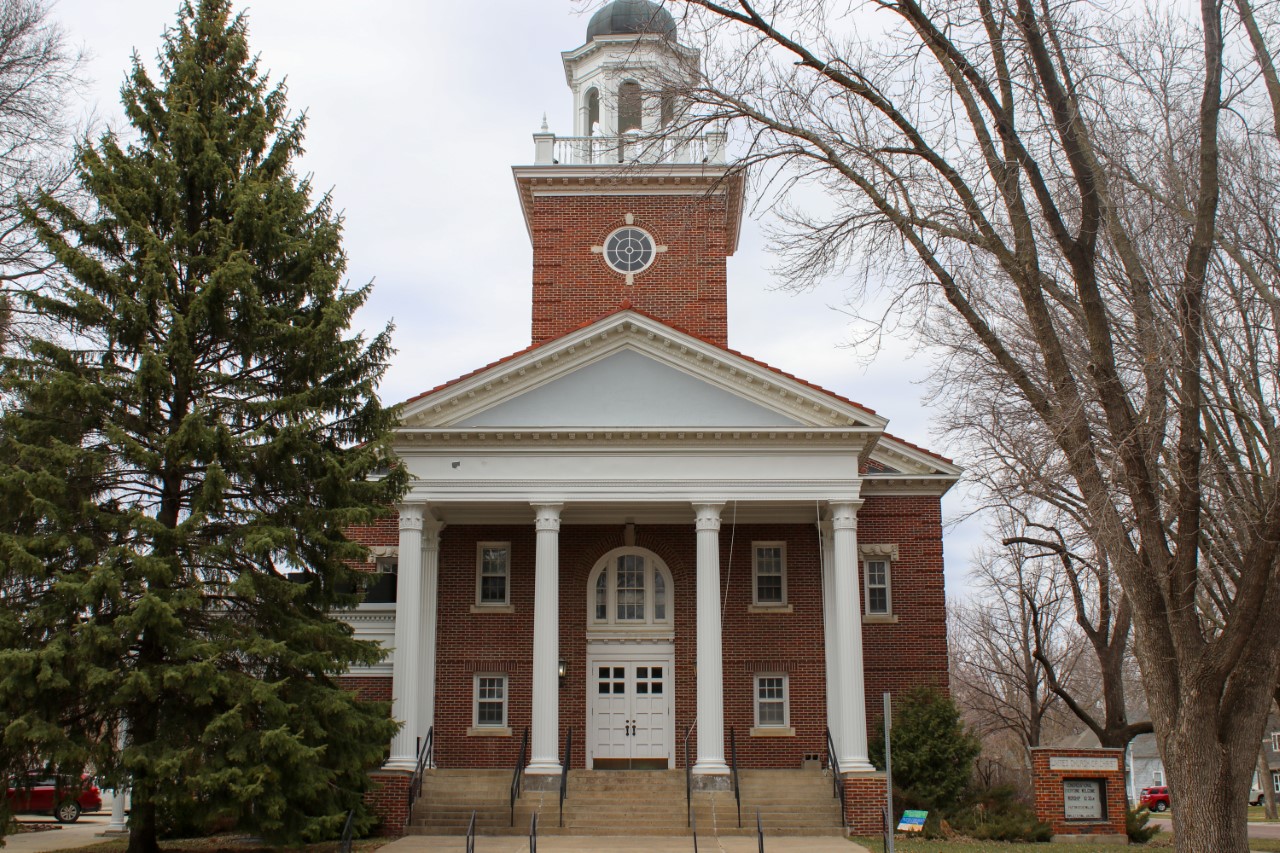
Vermillion church finds new status as National Historical Site nominee
The United Church of Christ, a building that has sat on Main Street since 1929, has begun the process of being included in the National Register of Historical Places.
Sandy Dickenson, a local architect and member of the church for 30 years, has been a part of the church’s nomination process along with parishioners Mary Edlen and Greg Redlend.
“While my role in the church isn’t an official one, I have been a part of the board of trustees for about 10 years and have just been very interested in protecting the integrity of the church,” Dickenson said.
These three church members have been working on this project for over two years. They began the talk of starting the nomination process in order to access Deadwood Funds.
Deadwood Funds are funds that are available for buildings on the National Register of Historical Places or those in the process of being nominated. After receiving these funds, the United Church of Christ used them to build new storm windows.
The church is situated between two historic districts, each one block away from the church. Members of the United Church of Christ are confused as to why the church was never included in either the University Historic District or the Forest Avenue Historic District, yet instead sat between the two.
“We feel like the church is iconic. It’s got the big cupola on top that you can see for a long way around. With the four big columns on the front, it makes it a real landmark that anchors Main Street,” Dickenson said.
The church’s design and architecture are very unique and uncommon in the South Dakota area, Dickenson said. The original designers of the church were influenced by a woman named Mrs. Wellington. She had come from the east coast and was interested in the colonial congregational look of buildings. With this interest, the United Church of Christ took on this architectural style and became one of the few buildings in South Dakota to have a colonial look.
Since the church members feel so passionately about making the United Church of Christ into a National Historical Site, they have asked for the help of Liz Amalie from the State Historical Society in Pierre.
The nomination process has recently finished, and will go before the state on April 22. If approved, it will then move on to the national approval stage.
Finishing the process could take months or years, Dickenson said. There is no way to know how long the approval stage of the process will take, but if it does get approved, the future of the church will be greatly improved.
“(The approval) will raise a lot of awareness to the historical importance of the church,” Dickenson said. “It will help to protect the building so that people can’t just tear it down at will. It will also set up the possibility of additional funding that we could use to continue to help preserve the church.”
